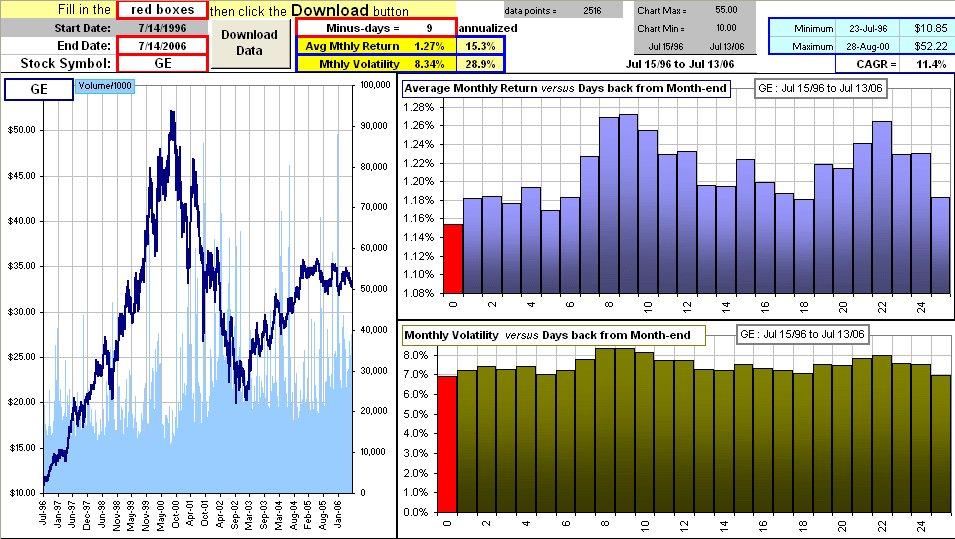| Average Returns ... and such |
Once upon a time I looked at the calculation of beta and the different numbers you'd get if you considered the end-of-month prices or one day before the end-of-month or maybe five days before or ...
>Yeah, so?
So, since many investors are interested in the average monthly return of their favourite stock or mutual fund, I was wondering whether that
number changed significantly if you used the month-to-month returns from, say, mid-month to mid-month or maybe ...
>Yeah, so?
So I have this spreadsheet which looks like this:
 Click on the picture to download the spreadsheet
Click on the picture to download the spreadsheetYou type in a stock symbol then click a button and get ten years worth of daily prices.
You also get the Average of the Monthly Returns using the prices from end-of-month to end-of-month or a day before that or a day before that or ...
>Meaning the monthly returns using prices from the end-of-month less a few days, right?
Exactly! You also get the Volatility (or Standard Deviation) of those monthly returns.
Note that the very first numbers (coloured red, in the above example) use the end-of-month data.
>So why get worked up about this? I mean, did you expect ...?
I was surprised!
When you read about "historical averages", they may depend significantly upon when they are calculated. Weren't you surprised?
>No!
Suppose average annual returns were calculated considering September prices instead of end-of-year prices, or maybe ... ...
>zzzZZZ
Note:
The spreadsheet uses the EOMONTH command ... which is an Excel Add-In.
If'n you haven't added it, then do this:
Tools
then Add-Ins...
then Analysis Toolpack
then pray ... 
